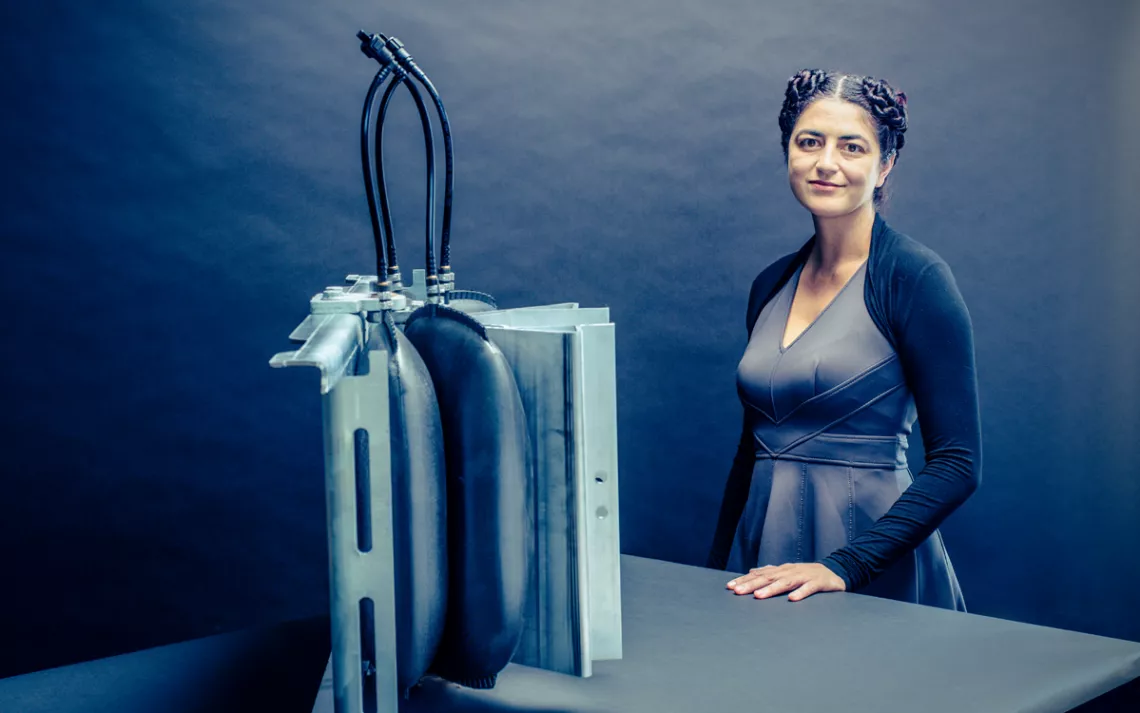From Girl Who Loved Math to Solar Roboticist
The key to making solar that lasts is to treat it like infrastructure

Leila Madrone: CTO of Sunfolding | Photo by Timothy Archibald
When I was seven years old, I wanted to work at NASA when I grew up. Fortunately, I really loved math.
I ended up getting into MIT and fell in love with robotics. After college, I first designed robots for biotech, then got a job at NASA, working in the Intelligent Robotics Group. I was fulfilling my childhood dream, but after a few years, I realized I wanted to work on something more meaningful. For me, that was renewable energy.
I joined a well-funded start-up that was developing a new way of doing photovoltaic solar. I worked on everything from trackers that helped move the panels to the systems that measured how much sunlight they were collecting to the analysis of how much each system cost to manufacture and install. It was 2007. At that time, no one really knew what the industry was going to look like. Almost everyone who was in the business was brand-new to it.
After a few years there, I had an experience. I was looking up at this giant machine. Something did not make sense. The amount of materials we were using didn't match the amount of energy that we could get out—we were putting a huge amount of steel into this system. It was never going to be low-cost enough to compete with coal. So I took a year off, traveling to places that were ripe for solar development. I wanted to get out of the Silicon Valley bubble.
In 2011, I started working with a team at Otherlab, a hybrid research lab and business incubator focused on robotics and energy. We built prototypes for extremely durable, low-cost hardware that could help existing solar technology work more efficiently.
I founded Sunfolding in 2012, not because I had planned on being an entrepreneur but because I knew that in order to get this idea out to the world, I had to get outside my comfort zone. If we could fundamentally change the underlying machines that move solar panels to track the sun and make it cheaper and easier to build solar, we could have a meaningful impact. When you add tracking to solar, you can get 25 percent more energy out of these same exact panels on the same exact land, depending on where you are.
To do that, we replaced motors, gearboxes, torque tubes, bearings, batteries, and wires with a single part, made mostly of air. The underlying concept was sound. The hard part was figuring out how to work with manufacturers and make a product that could last in the field for at least 30 years. Start-up culture, even if it's in the hardware sector, is often about building a product that needs to be constantly upgraded. We needed to build things to last.
The stakeholder map of the solar industry is complex. You're not just selling to one customer. There are owners and developers and installers and subcontractors and the banks that finance everything. To some extent, all of them need to sign off in order to get something new into the solar industry.
At this point, the people who have stayed in solar—they've seen a lot of things go wrong. The people who are doing well are the ones who have pushed the envelope while still creating reliable systems. In order to create something that will make an impact in solar, you need to approach it like infrastructure. This is going to be a part of the electrical grid.
We leverage existing industries to make solar trackers in the same way that the solar industry used advances in the semiconductor industry to make panels. "Don't innovate for the sake of innovation" is a guiding principle for us. This makes things more dependable, and it helps get inventions out in the world faster.
Being a hero and coming up with a flashy new idea that saves the world—that's not always grounded in what the world needs. You need to find out what an industry's problems are and then solve the biggest ones. Because we don't have the time or the resources to solve them all.
This article appeared in the January/February 2020 edition with the headline "Built to Last."
 The Magazine of The Sierra Club
The Magazine of The Sierra Club



